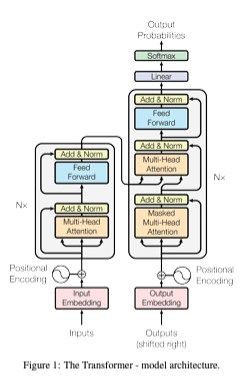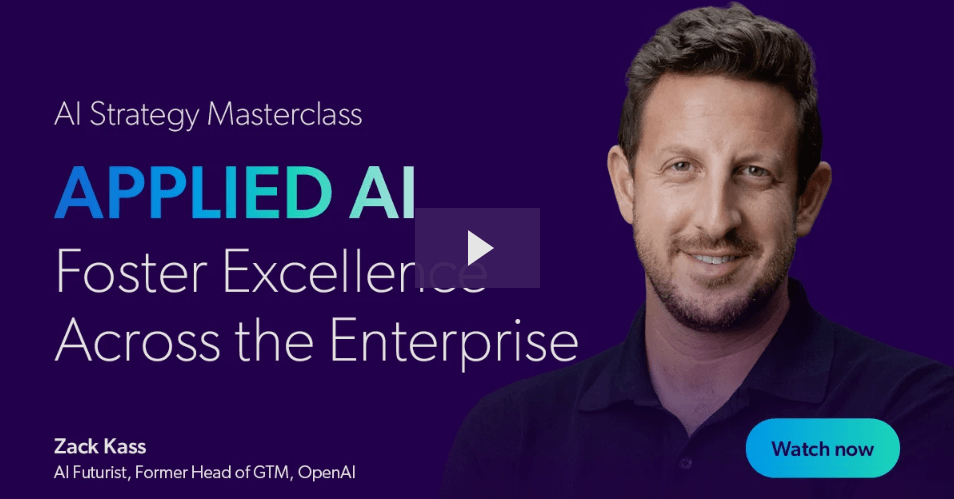With AI technologies advancing so rapidly, how can businesses keep up — much less get ahead — without the fear of becoming obsolete before they even begin?
In May, OpenAI made a groundbreaking announcement. The latest iteration of its headline-dominating GPT AI model, GPT-4o (the “o” stands for “omni”) can not only interact with the text you type or the words you say, but it can also process and understand visual information. It can describe in real-time what you look like and what you’re doing, and even laugh at your lamest dad jokes.
Beyond the “Huh, neat!” of it all, there’s real opportunity bubbling to the surface with AI products that include Gemini, Midjourney, Perplexity and, yes, Coveo’s Relevance Generative Answering. In fact, there are now thousands of AI-powered products available on the market, with potential applications ranging from building personalized learning and tutoring for students and creating code for increasingly complex applications to helping doctors surface new patient insights.
“There is so much happening on the science side right now that it can — and often does — feel impossible to know where to pin the tail on this donkey,” said Zack Kass, AI Futurist and Former Head of GTM at OpenAI during our recent AI Strategy Masterclass: Applied AI: Practical Solutions That Foster Excellence Across The Enterprise. “My position has been and continues to be that the sooner you adopt, the better — but assume that the market will change just as fast as you make decisions.”
The AI Rewind: How Did We Get Here?
AI is hardly new. Earlier popular forms have successfully beaten our top chess champions, mastered the art of playing Go and become near-ubiquitous with the voice assistants that chat with us via our phones and smart speakers.
But there’s something different about this new dawn of generative AI and artificial general intelligence (GenAI and AGI for short) that, unlike previous generations, have the benefit of four key breakthroughs:
1. The modern transformer
The transformer as we know it comes from a landmark paper, Attention Is All You Need, penned by eight Google researchers in 2017. We won’t go into too much detail, but suffice it to say, the transformer is the magic architecture behind deep learning that allows an AI to take a prompt — say, “What’s the capital of France?” — analyze connections between the different parts of the query and spit out a meaningful response in natural language. “The capital of France is Paris.”

2. More computing power
In tandem with the transformer architecture, the AI-volution also benefits from recent breakthroughs in AI hardware (for example, Nvidia’s latest GPU) that boosts both performance and efficiency. OpenAI’s own analysis shows the amount of compute in AI training runs has experienced a doubling time of just 3.4 months since 2012. Paired with a low interest-rate environment, “Companies like OpenAI were able to raise what was previously considered sovereign nation amounts of money and put it all towards compute power,” Kass said.
3. More available data
Ten trillion words: that’s the estimated corpus used to train current large language models. That number is growing at a mind-blowing pace. “Between 2010 and 2024, the internet grew four orders of magnitude,” Kass explained. And that ever-growing mountain of information is getting cleaner, too, with projects like Common Crawl organizing open web data and making it broadly accessible.
4. Publishing what we learn
AI isn’t developed in a vacuum. The companies leading the charge, including OpenAI, Google and Meta among many others, share their best practices with each other. Combined with the previous three factors, this creates what Kass called “a perfect storm of events” where AI models improve in performance, precision and size on a superlinear scale. No ceiling in sight.
Where Are We Headed Next With AI?
With the capabilities of frontier AI models growing, price tags are shrinking on older models. When OpenAI’s GPT-3 model was released, it ran about $10 per million tokens. Two years later, that number is closer to $0.10 per million tokens. The cost of newer models is on a faster decline than their predecessors, with GPT-4 reducing the price by almost half in just one year.
This is what Kass called a “new era,” and it’s a pattern we’ve seen before in critical resources such as water and electricity. “I think [AI] becomes a utility,” he said. “In the future, most of the things that we build will actually be built on an AI-powered grid.”
But before that happens, we need to consider two important thresholds:
- The technological threshold: What can machines do?
- The social threshold: What do we want machines to do?
Bridging the two “is going to be something that you have to ask yourself and your customers a lot in particular, because the future is about to unfold much faster than the past,” Kass advised.
How will that play out? Kass foresees three phases of adoption:
Phase 1: AI-enhanced applications
Think ChatGPT, autocomplete and other AI-enhanced digital experiences. Many of us use these applications (or applications like them) every day, and current AI improvements won’t require us to interact any differently. They simply make the process easier or more personalized to us.

Phase 2: Autonomous AI agents
We willallow autonomous agents to do work within our apps and across the internet. For example, booking a flight could happen automatically and instantaneously in the background within apps that already exist on your device. All you need to do is give the command.
Phase 3: AI-powered operating systems
Moving away from the digital screens we know and love,devices will bifurcate, with a separate CPU powering peripherals such as wearables. This is still far in the future — Kass cited a former Apple leader who estimates the final iPhone may launch sometime in the next eight years. (Though there’s ample room for debate, and we don’t have a crystal ball.)
The more advanced the phase, the more AI will ask us to consider those thresholds. Autonomous AI agents, including autonomous vehicles, paint a picture of this. “Society has an exceptional tolerance of human failure,” Kass said. “We have no tolerance for mechanical failure.”
In short, “The problem is we’re going to need to quickly understand, what are we willing to start to surrender to machines?”
How Do You Seize The AI Advantage?
Is this new dawn just a hype cycle? For Kass, absolutely not.
Rather, it’s a burgeoning opportunity. “A lot of people still have not used these products,” he said, “We’re still very, very early, and there’s still incredible amounts of room in the market to build really exceptional products.”
Companies that have already integrated this new era of AI report both operational and profitability gains. Kass pointed to a 12% average improvement in profit margins by companies adopting AI. In addition, “The gain in the S&P500 market cap since the release of GPT-4 is $6 trillion,” Kass said. “These are fundamental improvements to these companies … The early adopters of this technology are already gaining massively in their revenue improvements and their profit improvements. We’re going to see incredible efficiency gains going forward by companies who adopt this technology.”
So how do you take advantage of that opportunity? Kass cautioned against getting too tactical during a time when tech is changing day by day. Rather, it’s about making broader strategic decisions about where AI can help.
- The application layer: OpenAI’s large language model GPT-3.5 was built a full six months before the ChatGPT application was released in November 2022. “There was no major research breakthrough. The breakthrough was the application,” Kass explained. “These companies are increasingly not differentiated on the research… what you get to do is differentiate on the buyer experience, the user experience.”
- Your data: Sure, you can fine-tune your models, but your data can do far more interesting things. The real magic happens when you can deliver what you’ve been promising your customers all along. “The future is vector search and retrieval powered by [retrieval augmented generation],” leveraging your data to build hyper-personalized experiences, said Kass.
- Distribution strategy: “You can build the world’s best product. It doesn’t matter if no one buys it,” advises Kass. Sales and marketing will remain critical in the age of advanced AI. That can mean rolling out personalized marketing campaigns for consumers, and real-time supply chain insights for folks in the sales field – both strategies used by Coca-Cola. “Focus, focus, focus on figuring out how you can streamline your distribution, ideally powered by AI,” he said.
- Brand trust: In a world where exceptional experiences are the norm, “We will be differentiated on how we connect with people,” said Kass. The quality of your brand will be the key factor that keeps a consumer from swapping tabs and ordering from a competitor. The less friction the journey – whether it’s via your website, commerce channels or support systems – the more you can meet customers where they are… and the more they will feel understood by your brand.

Search Smarter with GenAI
When it comes to differentiated experiences and delivering on the potential of GenAI, brand differentiation and hyper-personalization, here at Coveo we know a thing or two.
With this dawn rising over the proverbial horizon, enterprise search is among the first areas to mark this new moment, Kass highlighted. Gone are the days of keyword search that customers have embraced for decades, replaced by natural language interactions and real-time responses that are relevant, up-to-date, and accurate – at scale, without draining profitability.
Whether you’re looking to boost shopper satisfaction, reduce cost-to-serve, deliver dynamic websites that customers love or augment your workforce productivity and efficiency, you can take the next step with Coveo’s Relevance Generative Answering.



